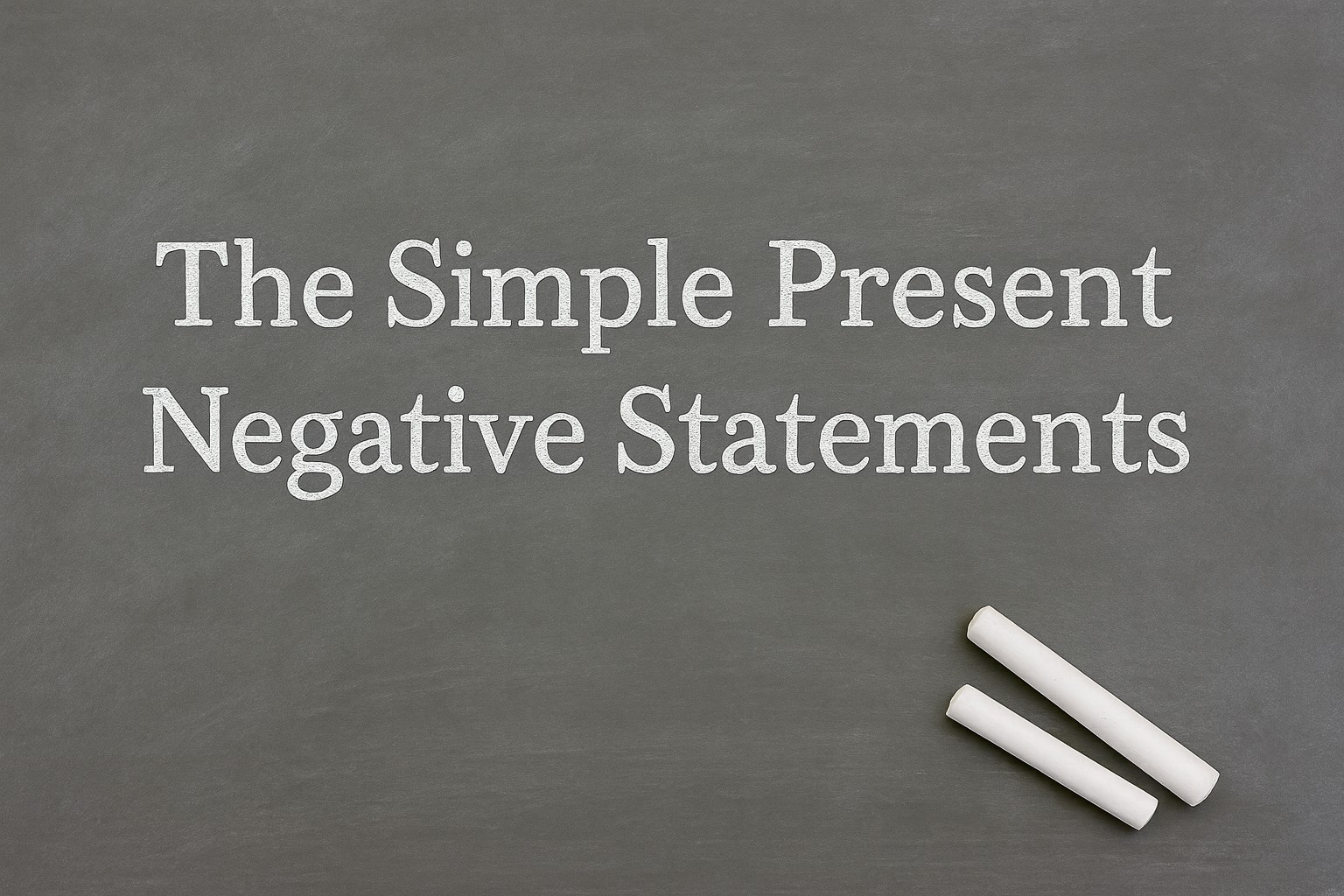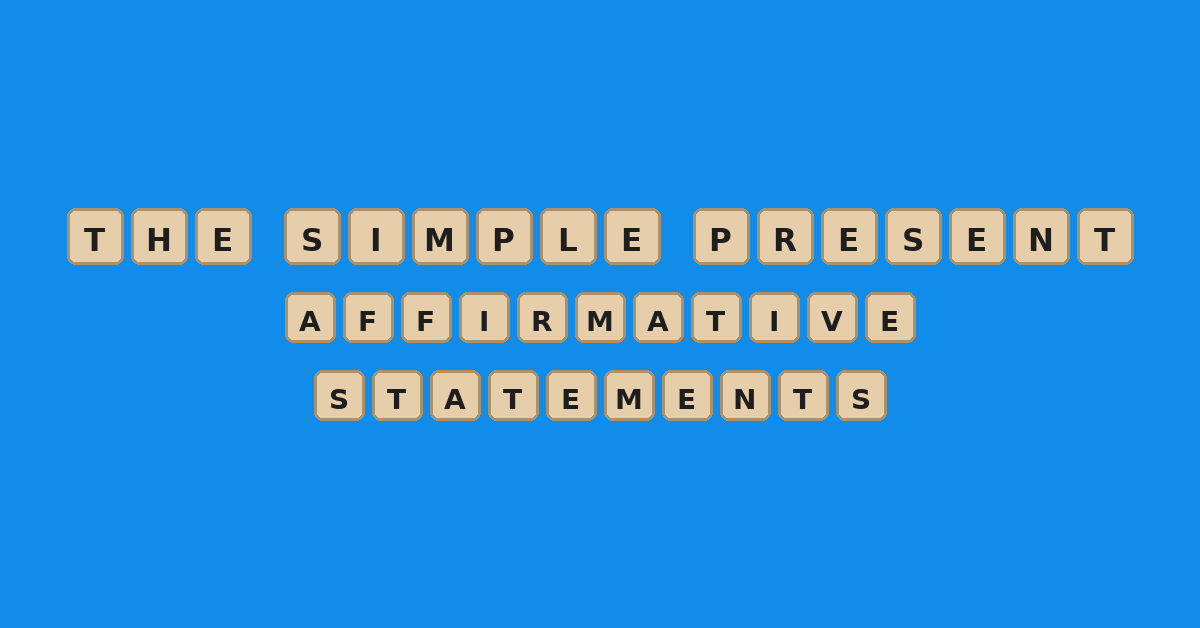Asking and answering questions is one of the most important skills in English. In this lesson, we will look at Yes/No questions in the simple present tense and how to give short answers.
What Are Yes/No Questions?
A Yes/No question is a question that can be answered with ‘Yes‘ or ‘No‘.
✅ Examples
- Do you like pizza? Yes, I do.
- Does she live in San Antonio? No, she doesn’t.
- Is he your teacher? Yes, he is.
You do not need to give long answers. A short answer is correct and natural.
How to Make Yes/No Questions in the Simple Present
There are two main ways:
1. With a Be verb (am, is, are)
For Yes/No questions, the Be verb comes before the subject.
a. Use ‘am’ with the subject pronoun ‘I’
b. Use ‘is’ with the subject pronouns ‘He, She, and It’. We also use ‘is’ with plural subjects.
✅ Examples
- Am I late?
- Is he your teacher?
- Is she your sister?
- Is it hot today?
- Is Lucia at the park?
c. Use ‘are’ with the subject pronouns ‘You, We, and They‘. We also use ‘are’ with plural subjects.
✅ Examples
- Are you from Mexico?
- Are we late for class?
- Are they students?
- Are Alejandra and Diego in Barcelona?
2. With Do / Does
In Yes/No Questions, the verbs ‘do‘ and ‘does‘ are helping (auxiliary) verbs. They do not add meaning. They only help make the sentence correct.
‘Do‘ and ‘Does‘ are used with a main verb in Yes/No Questions in the simple present.
‘Do’ or ‘Does’ comes before the subject. The base form of the main verb comes after the subject.
Use ‘Do‘ with the following subject pronouns ‘I, you, we, and they‘. We also use ‘Do’ with plural subjects.
✅ Examples
- Do I have a test today?
- Do you want pizza for dinner tonight?
- Do we need our computers for class?
- Do they drive to class?
- Do your dogs like to play in the river?
Use ‘Does‘ with the following subject pronouns ‘He, She, and It‘. We also use ‘Does’ with singular subjects.
✅ Examples
- Does he speak Chinese fluently?
- Does she work at a bank?
- Does it snow a lot in South Texas?
- Does Gabriela play the guitar?
Short Answers
1. Use Yes or No + a Subject Pronoun + a Be Verb + (not).
✅ Examples
- Am I in your class? → Yes, you are. / No, you aren’t.
- Is he from Argentina? → Yes, he is. / No, he isn’t.
- Is she at the coffee shop? → Yes, she is. / No, she isn’t.
- Is it cold outside right now? → Yes, it is. / No, it isn’t.
- Is John in your class? → Yes, he is. / No, he isn’t.
- Are you ready for class? → Yes, I am. / No, I’m not.
- Are we on the right bus? → Yes, we are. / No, we aren’t.
- Are they students? → Yes, they are. / No, they aren’t.
- Are Gabi and Patricia friends? → Yes, they are. / No, they aren’t.
2. Use Yes or No + a Subject Pronoun + Do / Does + (not).
a. If the question uses ‘Do‘, the short answer also uses ‘Do‘.
✅ Examples
- Do I have a test today? → Yes, you do. / No, you don’t.
- Do you play soccer? → Yes, I do. / No, I don’t.
- Do we have a test today? → Yes, we do. / No, you don’t.
- Do they like Rock music? → Yes, they do. / No, they don’t.
- Do your cats sleep a lot? → Yes, they do. / No, they don’t.
b. If the question uses ‘Does‘, the short answer also uses ‘Does‘.
✅ Examples
- Does he work at a bank? → Yes, he does. / No, he doesn’t.
- Does she live in Madrid? → Yes, she does. / No, she doesn’t.
- Does it rain a lot in April? → Yes, it does. / No, it doesn’t.
- Does Rocio play the piano? → Yes, she does. / No, she doesn’t.
👉 Remember! Don’t just say ‘Yes‘ or ‘No‘. Use a short answer to sound polite and clear.
Common Mistakes with Yes/No Questions and Short Answers
1. Forgetting Do / Does
❌ You like pizza?
✅ Do you like pizza?
Students often forget that we need ‘do / does‘ to form the question in the simple present (except with be verbs).
2. Using the Wrong Verb Form
❌ Does she likes coffee?
✅ Does she like coffee?
👉 Remember! After ‘does‘ the verb stays in the base form (no “-s”).
3. Mixing Up ‘Do‘ and ‘Does‘
❌ Do he live here?
✅ Does he live here?
👉 Use ‘do’ with ‘I, you, we, they‘ and plural subjects. Use does with ‘he, she, it‘ and singular subjects.
4. Incorrect Short Answers
❌ Yes, she do.
✅ Yes, she does.
❌ No, he don’t.
✅ No, he doesn’t.
👉 Always match the helping verb do and does with the subject.
5. Forgetting the Be verb
❌ She your teacher?
✅ Is she your teacher?
👉 With ‘am, is, are‘ you don’t need ‘do / does‘.
6. Only Saying “Yes” or “No”
❌ Teacher: Do you have your homework?
Student: Yes.
✅ Yes, I do.
👉 Just saying ‘Yes‘ or ‘No‘ can sound rude or unfinished. Always give the short answer.
Let’s Practice!
A. Yes/No Questions
Each Yes/No question has a mistake. Rewrite it correctly.
- You like pizza?
- Do she speak English?
- Are he your brother?
- Does they go to school on Saturdays?
- She is a doctor?
- Do it rains a lot in April?
- Is you a student?
- They are happy?
- Does Maria likes ice cream?
- Are it cold today?
B. Short Answers
Choose the correct short answer.
- Do you like coffee?
a) Yes, I is.
b) Yes, I do.
c) No, I doesn’t. - Does she speak English?
a) Yes, she does.
b) Yes, she do.
c) No, she don’t. - Is he your brother?
a) Yes, he are.
b) Yes, he is.
c) No, he doesn’t. - Are they at school?
a) No, they aren’t.
b) No, they doesn’t.
c) Yes, they do. - Do we have class today?
a) Yes, we are.
b) No, we don’t.
c) Yes, we does.
Scoring & Feedback
🔵 13 – 15 Correct
Excellent work! 🎉 You are ready to use the simple present in Yes/No questions in your daily life. Keep using them in your everyday conversations and writing.
🟢 11 – 12 Correct
Good effort! ✅ You are on the right track. Review the ones you missed and keep practicing.
🔴 0 – 10 Correct
No Worries! 🌱 You’re learning, and that’s what matters. Take a moment to review the examples and do the quiz again.
Want more reading, writing, listening, and speaking practice? Check out the Essential English series on Amazon!
Conclusion
Use the simple present every day when you talk about your life. Practice asking Yes/No questions. The more you practice, the easier it becomes! Subscribe for updated content from Beyond English!
Leave a comment below!
And remember . . . Practice . . . Practice . . . Practice!!!


